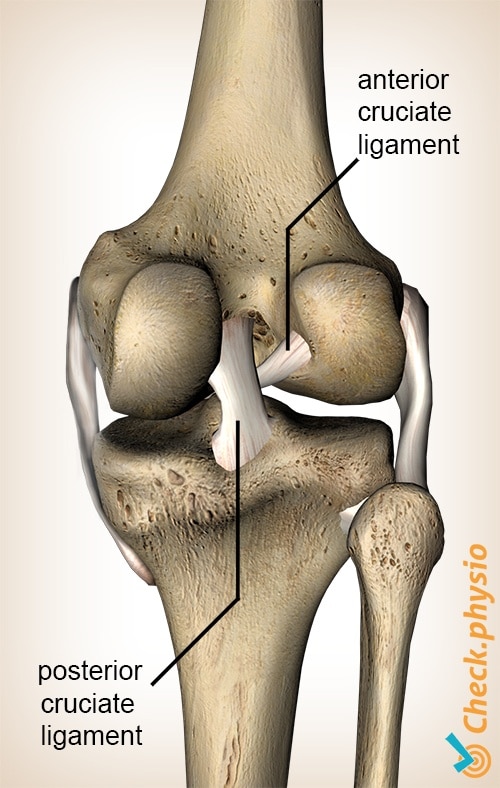Posterior cruciate ligament injury
PCL injury
The posterior cruciate ligament is a very strong structure located in the middle of the knee. This ligament only tears under extreme force and results in instability in the knee joint.

However, most cruciate ligament injuries involve the anterior cruciate ligament.
Description of condition
There are two cruciate ligaments in the knee: the anterior and posterior cruciate ligament. Both connect the upper leg to the lower leg and play an important role in maintaining the stability of the knee joint.
The posterior cruciate ligament prevents the lower leg from moving too far backward in relation to the upper leg. It also prevents the knee from over-extending. If the posterior cruciate ligament is damaged, these movements are no longer restricted properly and the knee becomes unstable.
Cause and history
A typical cause of a posterior cruciate ligament injury is the so-called "dashboard trauma". During a head-on collision, the dashboard hits the lower leg from the front while the knee is bent. This can tear the posterior cruciate ligament.
Over-extending the knee may also cause damage to the posterior cruciate ligament.
Signs & symptoms
Over-extension or a small tear of the cruciate ligament can result in minimal symptoms. If the cruciate ligament tears completely the symptoms will be more pronounced, but still hard to distinguish from an anterior cruciate ligament rupture.
In a complete rupture, the entire cruciate ligament tears off. This may be accompanied by a popping or snapping sensation in the knee.
The knee may start to swell immediately after the injury due to bleeding in the joint. There may be a feeling of instability when walking up and down steps, or the knee may be painful when landing on the heel while walking. People recognize a feeling of not being supported by the knee. In some cases the knee can lock.
The instability in the knee can result in various other injuries from over-loading the surrounding structures.
Diagnosis
Treatment
Depending on the severity of the injury, physiotherapy or surgery may be chosen. Surgery will only be performed if severe instability occurs and the posterior cruciate ligament is actually ruptured. This can be confirmed using an MRI or arthroscopy.
Exercises
Follow the specially compiled exercise programme with exercises for Posterior cruciate ligament injury here.
You can check your symptoms using the online physiotherapy check or make an appointment with a physiotherapy practice in your locality.
References
Brooijmans, F., Huiberts, L., Hekking, J. & Lataster, A. (2011). Kan de fysiotherapeut acute knieletsels adequaat diagnosticeren. Physios: 2011-1-5.
Nugteren, K. van & Winkel, D. (2008). Onderzoek en behandeling van de knie. Houten: Bohn Stafleu van Loghum.
Verhaar, J.A.N. & Linden, A.J. van der (2005). Orthopedie. Houten: Bohn Stafleu van Loghum.


